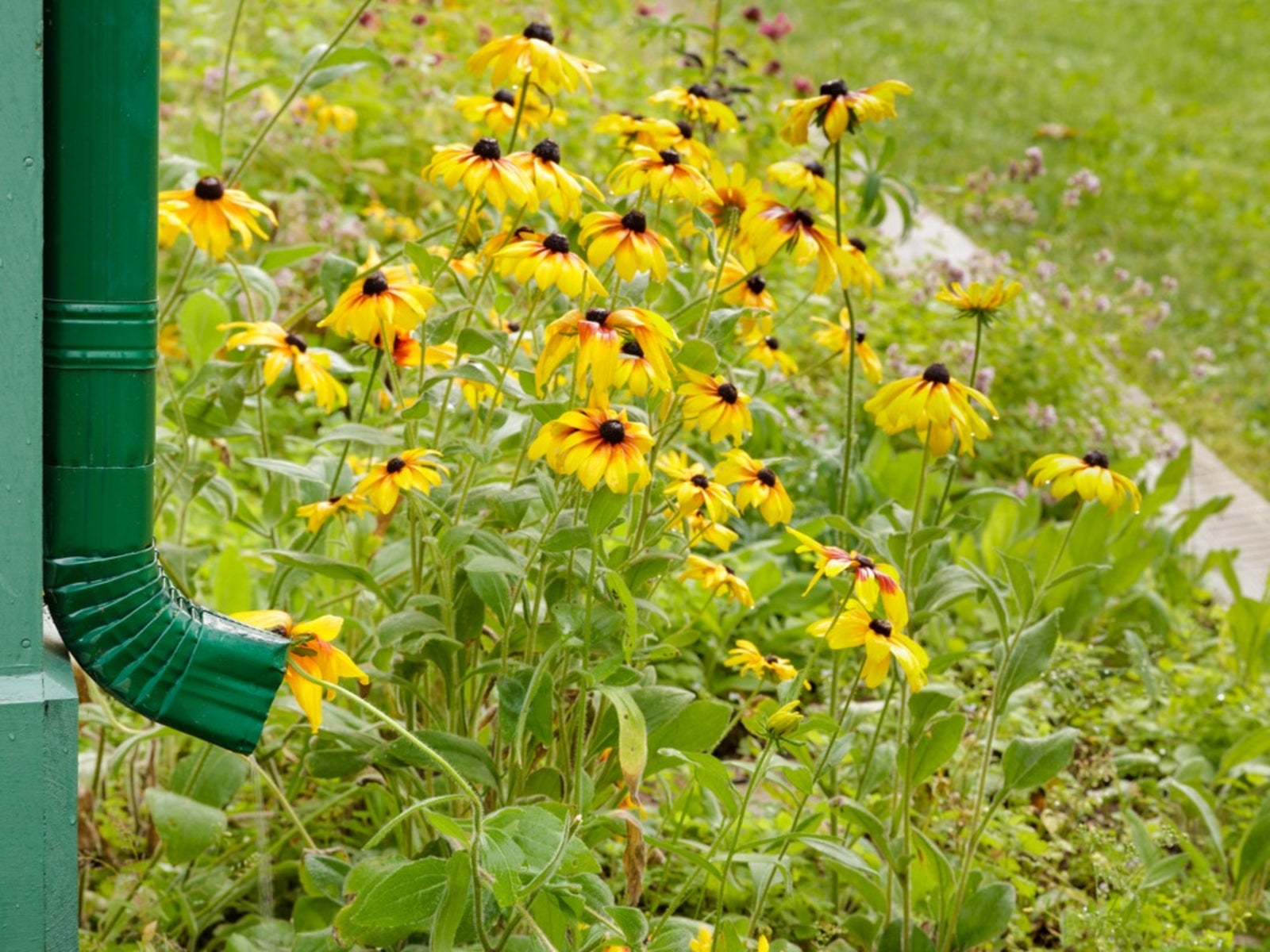Downspout Vegetable Gardening – Planting A Rainwater Vegetable Garden


As we know, rainwater is among the best ways to water our plants and our gardens. However, collecting and using rainwater can sometimes be a complicated and time-consuming process. A different way to utilize this valuable source of water can be accomplished through the creation of a downspout or rain gutter garden.
If you’re intrigued by this concept, read on to learn more about growing downspout vegetables. Of course, fruit, herbs and ornamental crops can be planted and watered like this. Most all crops benefit from rainwater gardening.
Starting a Rainwater Vegetable Garden
Collecting the runoff from the roof and directing it into your garden uses a one-time set up that distributes the water into areas where it is needed most. Plant to accommodate this managed natural watering system as an important part of the plan. Provide consistent irrigation to a downspout planter for veggies or to an entire garden area.
The south side of a building is not the best place to start a rainwater garden, as its prone to dry out more quickly. Other places where there are downspouts will usually be fine. Start the garden on the sunniest side of the house or building, whether it be the west, east, or north side.
Dig a water catchment depression under the downspout. This should be approximately 18 inches (46 cm.) wide by 12 inches (30 cm.) deep, then filled with one to two inches (2.5 to 5 cm.) of gravel or small stones. Use a slight slope around the sides of the catchment basin to direct water away from the foundation.
Create your garden here or set up a distribution system to move the water to a downspout garden further out into the landscape. Use an elbow and an extension to direct the water.
There are several options for the downspout garden. You can keep it small, near the gutter, and create a native planted bog or even an edible bog garden lined with plastic. For a typical vegetable garden, dig trenches between rows and direct the water to fill the trenches. Plant hills or rows above these with seeds or small vegetable plants that do best in moist to wet soil. Downspout gardens vary in size.
Sign up for the Gardening Know How newsletter today and receive a free copy of our e-book "How to Grow Delicious Tomatoes".
Plants for Downspout Vegetable Gardening
Watercress can grow even if submerged. American groundnut or arugula grow with consistently wet roots.
Celery, garden peas, and those in the Brassica family, like cabbage and cauliflower, prefer moist soil. Even tomatoes can thrive here. There is no shortage of vegetables to grow in the downspout garden.
Sources say not to use rainwater from roofs treated with anti-moss or other algae killing chemicals. Rainwater that crosses enameled steel and glazed tile roofs is acceptable, but sometimes that from wood-shingled and other roofs is not.
Most states allow the full collection and use of rainwater, but a few have restrictions. Be sure to check with your local cooperative extension office to see what, if any, restrictions or specific instructions for this type of garden exist in your area.

Becca Badgett was a regular contributor to Gardening Know How for ten years. Co-author of the book How to Grow an EMERGENCY Garden, Becca specializes in succulent and cactus gardening.